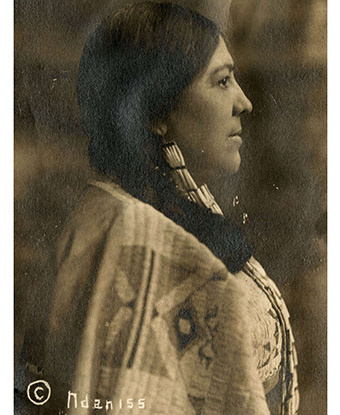Spotlight: Marie Louise Bottineau Baldwin

For Women's History Month, the William A. Wise Law Library is spotlighting Indigenous Rights Activist, Suffragist, and attorney Marie Louise Bottineau Baldwin
Marie Louise Bottineau Baldwin (1863-1952) (Métis/Turtle Mountain Chippewa) was the daughter of a Turtle Mountain Chippewa lawyer. Baldwin started her career in her father's Minnesota legal office, and continued working there when it moved to D.C. in 1890 to protect the treaty rights of the Turtle Mountain Chippewa. There, she became a part of the community of Indigenous professional that lived and worked in Washington, D.C.
In 1904, she was hired as the most-highly paid Indigenous woman in the Office of Indian Affairs (though she made about half of what other staffers made). At first, she advocated for Indigenous people to assimilate to Anglo-American culture, but over time - as she grew involved with the Suffragist Movement and the Society for American Indians - her views changed. By 1911, she emphasized the importance of Indigenous values and cultures in modern society; and she is seen in her employment photograph in Turtle Mountain Chippewa dress with her hair braided (a "radical act" for a federal employee).
In 1912, she enrolled at the Washington College of Law and took night classes for 2 years. She became an attorney at the age of 51.
From 1911 to 1918, she was nationally known. She testified in front of Congress, met with women across the country, met the president, marched in the 1913 Women's Parade, and was interviewed by several newspapers.
After the Society for American Indians changed priorities, she distanced herself from them - but continued to work in the Office of Indian Affairs in D.C. until her retirement in 1932. She moved to California, where she lived until her death in 1952.
-rc
